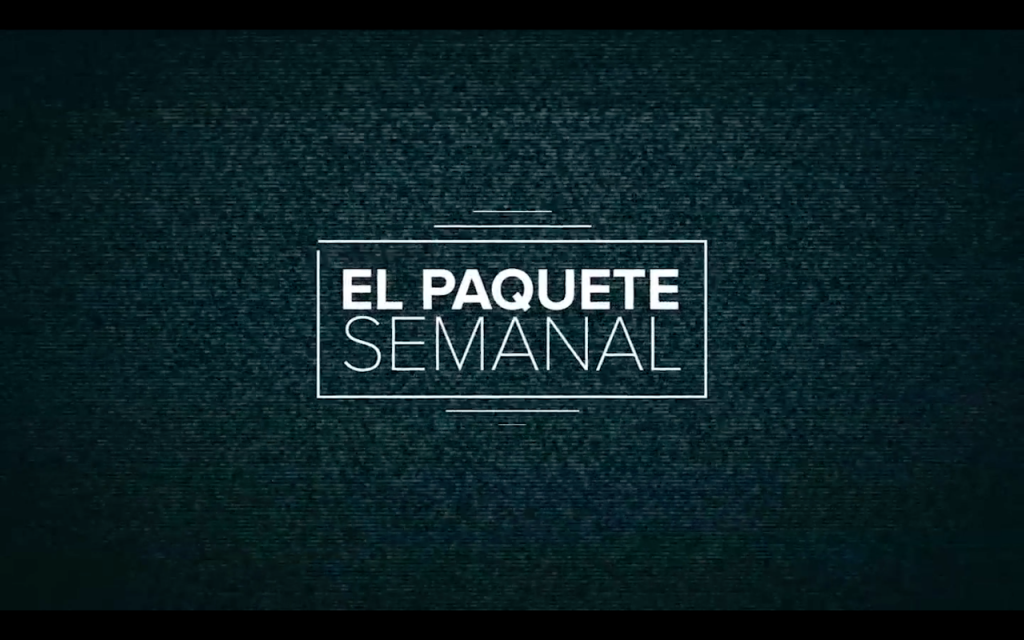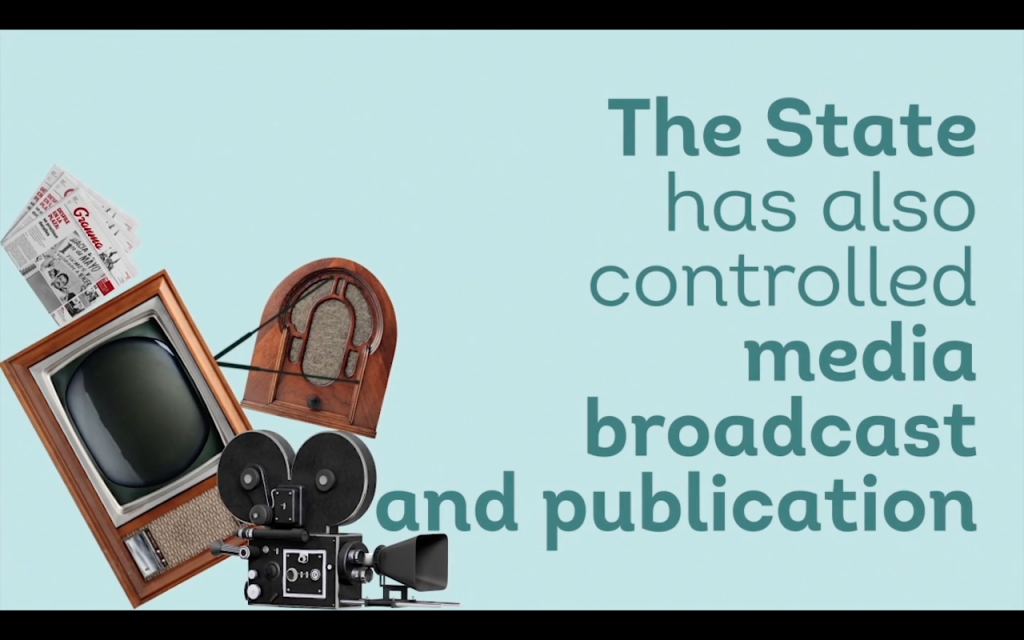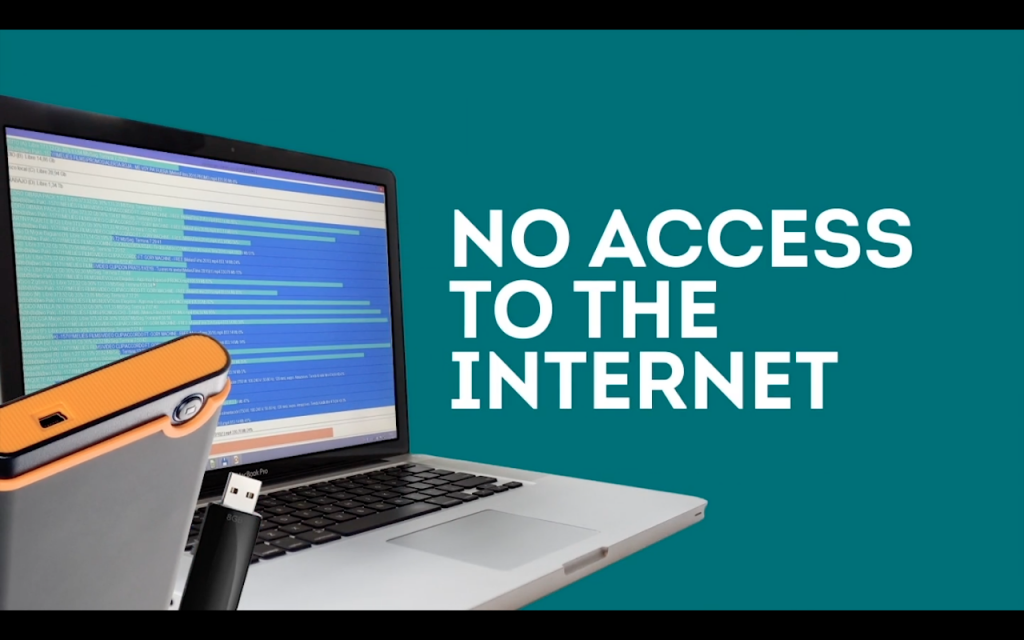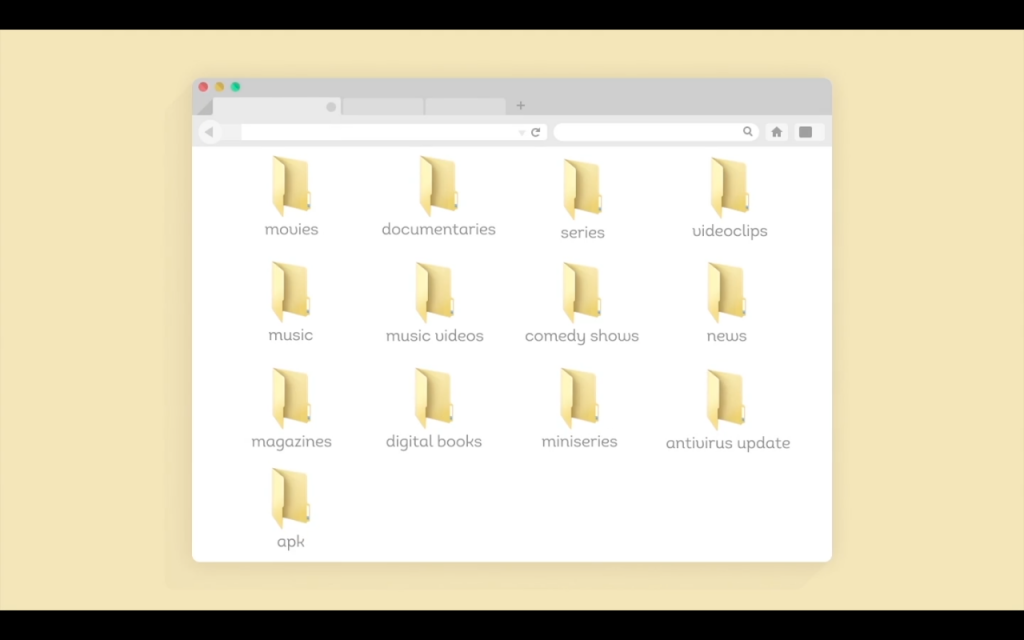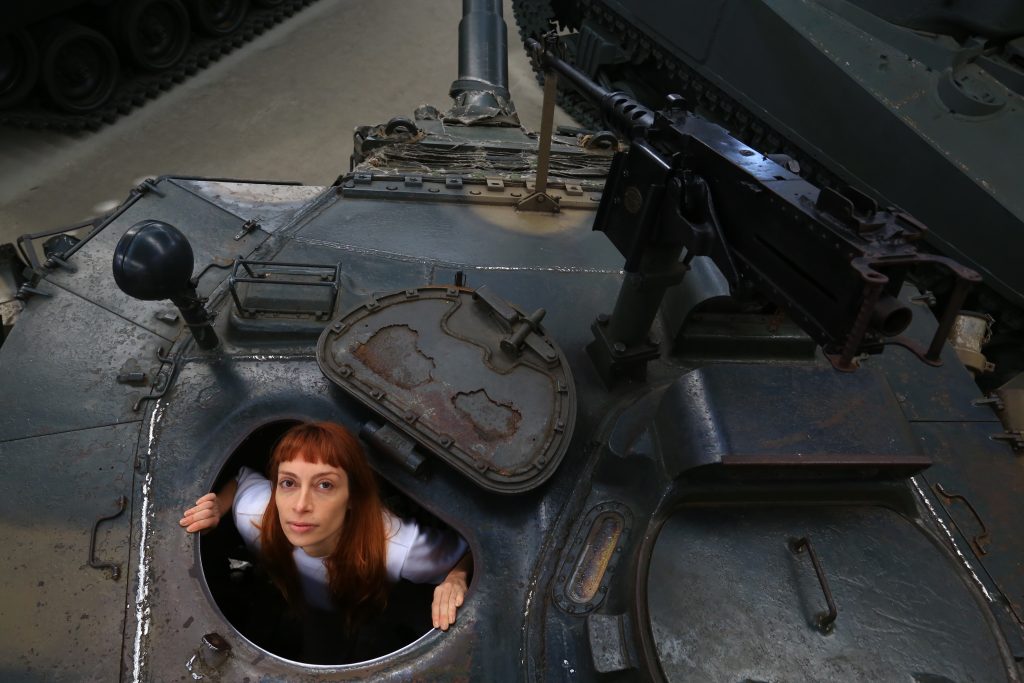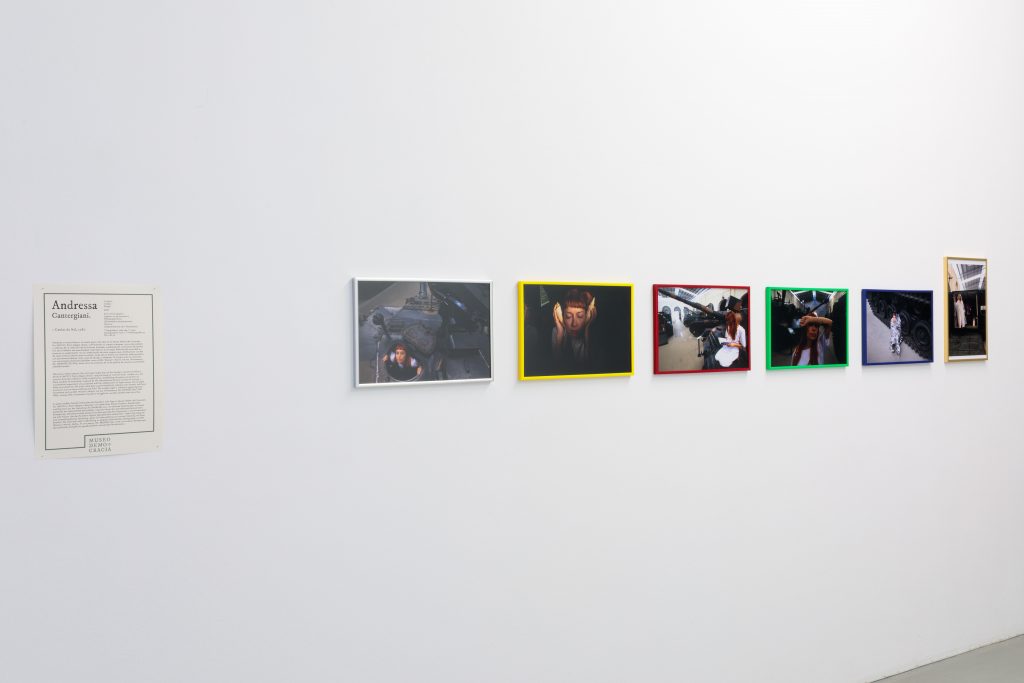
2. Department of Opportunism and Opportunities
Opening 7th May – 27th May 2021
The discourses of this Department approach political science, colonial critique and the anti-extractivist struggle. Its ironic title is a nod to stereotypical views on the regions of the Global South, whose social rules often challenge conventions and modes of understanding in the West. The modern history of violence and machismo in many of these regions has created a culture of coup d‘états supported by decadent aristocratic classes that are still in power today. According to history and the gamut of stereotypes currently in force, these countries apparently abound in cheap natural resources, exuberant landscapes, ›narco parties‹ and beautiful girls: an El Dorado of opportunities where the possibilities for exploitation can lead to vast riches – for those who can make it.
This Chapter’s works and activities denounce censorship, institutional violence, neo-extractivism, the relationship between bodies and authority, and histories written and overwritten in blood and iron. Their contents reflect on heterogeneous modernities that encourage and ripen specific political scenarios and their aesthetics, while creating a new social ethos that defends oppression for the sake of the market.
In the constellation of positions that comment on this context, risk is an ever-present element experienced performatively in the city. It goes hand- in-hand the agonistic nature of social mobilisation, as can be seen in Brazil from 2016 and in Chile from 2019. This department writes its narrative through the works of Cheril Linett, Matheus Rocha Pitta, Jaime Lauriano, Ana Maria Millán, Marilyn Boror Bor, Andressa Cantergiani, Julia Mensch, Kiyoshi Yamamoto, PSJM and Daniela Ortiz, complemented by the activities of the public programme.
PSJM
Capitalist Penetration in the Amazon from 1988 to 2019
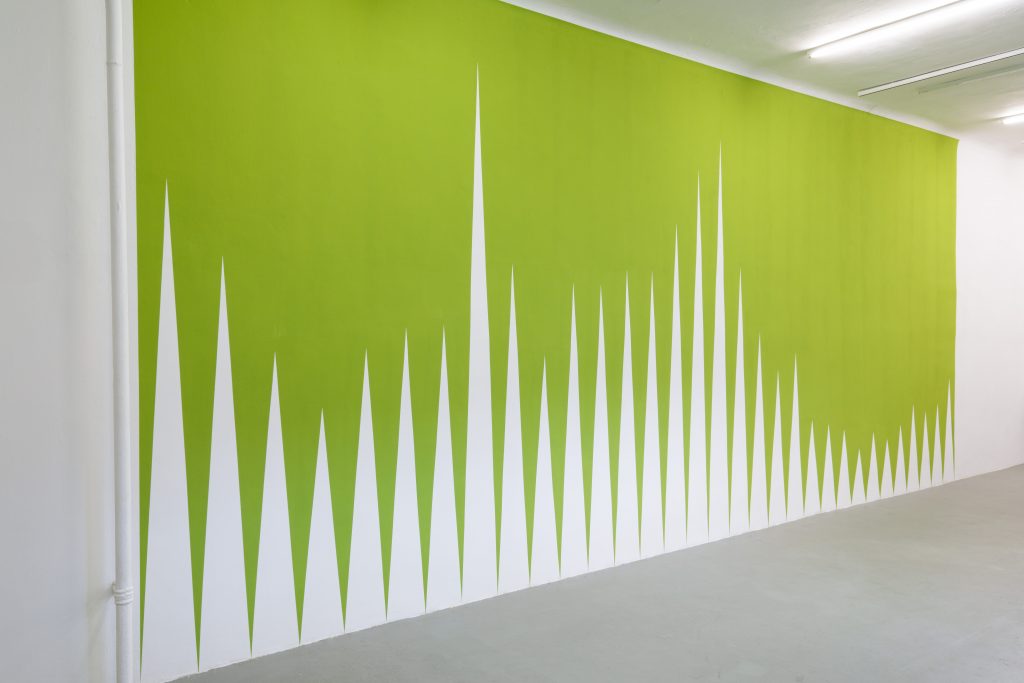
Silicate based paint, 3,70 m x 8,20 m
In this piece, part of PSJM’s “Social Geometry” series and their “Natural History” sub-series, the artists from the Canary Islands use a mural based on statistical data to show how deforestation in Brazil’s Amazon rainforest has evolved between 1988 and 2019. The piece uses two colours – a common graphic code for statistics – and the symbolic coding that associates green with life, nature and the female sex, as well as white as an absence. On the other hand, PSJM proposes a reading based on the title as an essential discourse for the work to be constituted as such. This enables a diachronic reading of the work, making it possible to understand that, beyond political or even sexual differences, there is an evolution over time of a collusion between state and private actors to exploit the Amazonian territory.
PSJM (Cynthia Viera, Las Palmas G.C., 1973; Pablo San José, Mieres, 1969)
PSJM is a team of creation, theory and management formed by Cynthia Viera (Las Palmas G.C., 1973) and Pablo San José (Mieres, 1969). PSJM present themselves as an «art brand», thus appropriating the procedures and strategies of advanced capitalism to subvert their symbolic structures.
https://psjm.es/
The team-brand has been included among the 100 most representative artists of International Political Art in Art & Agenda: Political Art and Activism, (Berlin: Gestalten, 2011). They have also been included in Younger than Jesus. Artist Directory. The essential handbook to the future of art (New York: Phaidon-New Museum, 2009) and Come Together: The Rise of Cooperative Art and Design (New York: Princeton Architectural Press N.Y., 2014), among others.Their work has been shown in numerous international exhibitions such as Personal Structures in the context of 58th Venice Biennale (2015), Beyond the Tropics, in the context of 56th Venice Biennale (2015), Hic et Nunc, Hirshhorn Museum, Washington D.C. (2014), One Shot!, Museu Brasileiro da Escultura, São Paulo (2014), Off Street, A Foundation, London (2009), The Real Royal Trip… by the Arts, PS1-MoMA, New York (2003, in collaboration with El Perro y Aitor Méndez), and others in Spain: Prophetia, Fundación Miró, Barcelona (2015) or PIGS, Artium, Vitoria (2016).
In the theoretical area, it is important to point out some of their latest publications: Arte y procesos democráticos (TEA, Tenerife, 2017) Fuego amigo (CENDEAC, Murcia, 2015), and the article «Marcuse y el lema de la CIA» in Revista de Occidente (Madrid, 2016). Among their works of cultural management are curatorial, coordination and design of: It´s Personal (Gabinete Literario, Las Palmas GC, 2019), Biotopias (Gabinete Literario, Las Palmas GC, 2018), Arte y Participación Ciudadana (Las Palmas GC, 2016) and the coordination and design of World is Work, curated by José María Durán (Kwadrat, Berlin, 2010). Their intense activity extends to didactics, where it is relevant their presence as guest professors at Washington State University or in the summer workshops PSJM•Workshop at the Cervantes Institute in Berlin (2012-2015) and Gabinete Literario of Las Palmas GC (2018-2019).
Marilyn Boror Bor
Edicto Cambio De Nombre, 2018
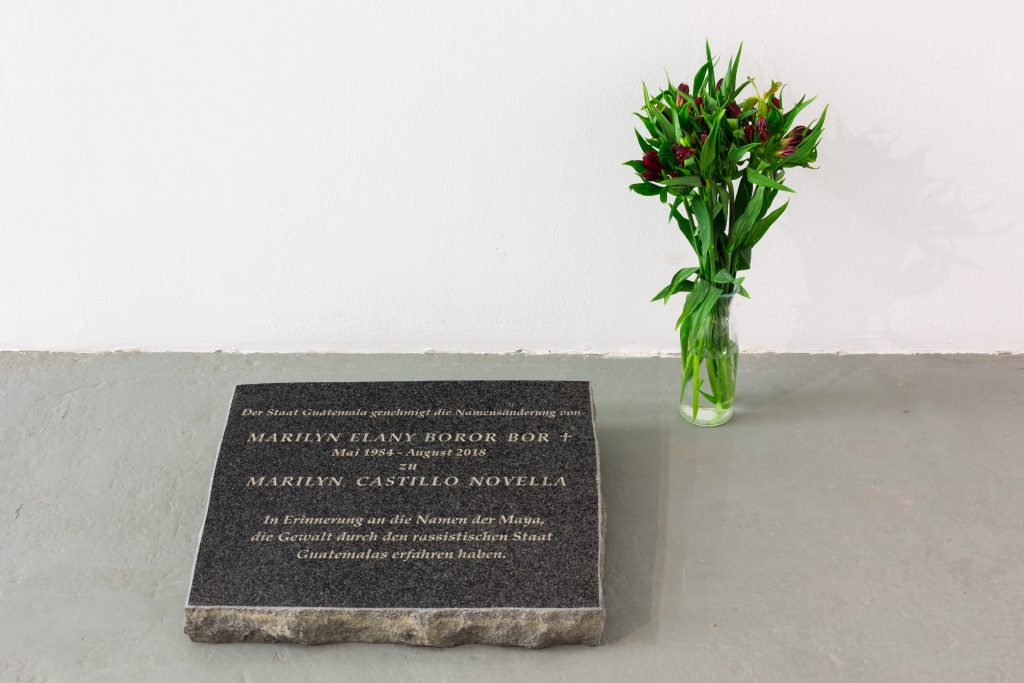
© Benjamin Renter
Performance object
Granite plate
Activated during the exhibition »This might be a place for hummingbirds«. Galerie im Körnerpark, Berlín, 16.11.19-05.02.20
Courtesy the artist
In 2018, Marilyn Elany Boror requested to change her name to Marilyn Elany Castillo Novella, replacing her indigenous surname with the name of two of Guatemala’s wealthiest families. This act resulted from her research on the social practice of name change in her country: people with indigenous surnames often change them when they move to big cities, especially the capital, to escape discrimination and racism. Boror’s name change went viral and was the subject of controversy on social networks. The granite slab, engraved with his name change and placed on the floor, is like a tombstone or commemorative plaque that keeps the memory of his indigenous surname alive in a space of mourning. [Adapted from “This might be a place for hummingbirds”: Galerie im Körnerpark, Berlin, 16.11.19-05.02.20.]
* On 15 May, the collective VOCES de Guatemala en Berlín will carry this piece in procession between the nGbK and a collective cemetery and vegetable garden, cultivated by VOCES de Guatemala en Berlin in Neukölln, Berlin.
Marilyn Boror Bor / San Juan Sacatepéquez, Guatemala, 1984
Lives and works in Guatemala. Maya-Kaqchikel artist from San Juan Sacatepequez Guatemala, works in multiple media including photography, painting, printmaking, installation and performance. Her work has been presented in spaces such as Galerie im körnerpark Berlin Germany; Whitebox Munich, Germany; Sur Gallery, Toronto Canada; Galeria Muy, Mexico, Museo Nacional de Arte Moderno Carlos Mérida de Guatemala; Museo Ixchel, Guatemala; Museum of Contemporary Art Santa Barbara, California; Instituto de las Artes de la Imagen y el Espacio Venezuela; Centro Cultural de España de Guatemala, El Salvador, Honduras, Nicaragua and Costa Rica, Centro Cultural Municipal AAI, Guatemala; Museo de Arte Contemporáneo, El Salvador; Museo de Arqueología y Etnología de Guatemala; The 9. 99 Gallery Guatemala; Nuevo Museo de Arte Contemporáneo NUMU, Guatemala among others.
Winner of the Yaxs Artistic Research Grant 2017-2018; artist selected to participate in the XIX, XX and XXII Biennial of Art Paiz -Trans/visible-, -Ordinario-Extraordinario- and -Perdidos.En Medio.Juntos-, Guatemala 2014 and 2016 and 2021; the Biennial of the South “Pueblos en Resistencia” Caracas, Venezuela and the International Festival of the Arts FIA, Costa Rica.
https://marilynboror.com/
Jaime Lauriano
Racial democracy, melting pot, purity of races
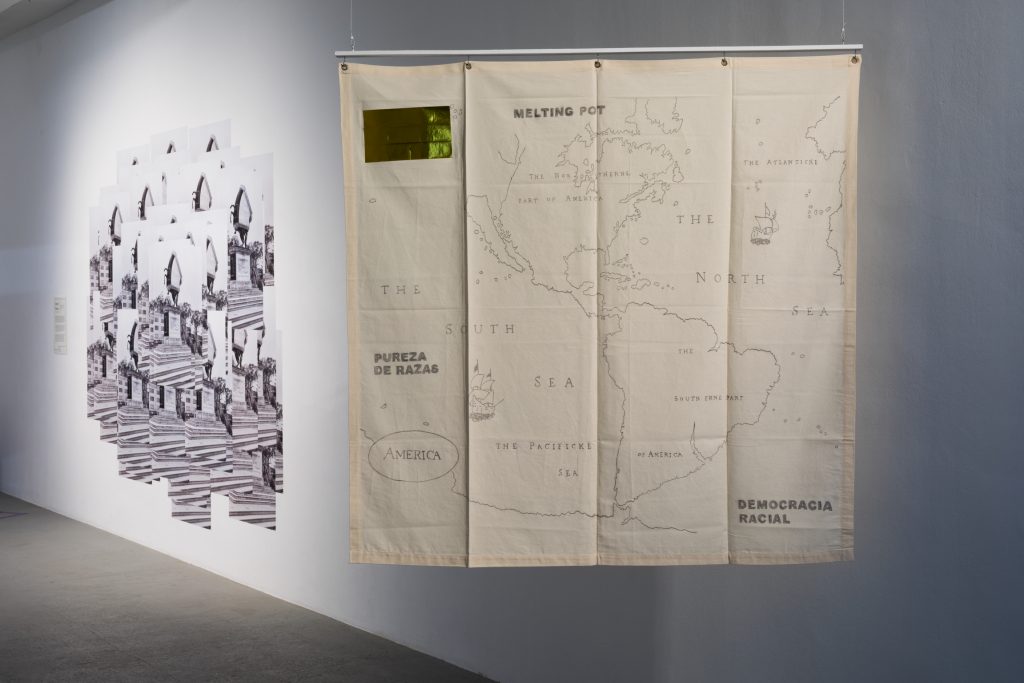
Pemba preta [Umbanda ritualistic chalk] and dermatographic pencil on cotton wool
150 x 160 cm
This series recreates illustrations of maps and nautical charts with their emblematic scenes of navigations and the “discovery of the new world”. It is a black-on-white re-reading of early efforts to depict the system of colonisation, the exploitation of timber and indigenous labour, the first proletariat of the future “continent”. The sticky tapes, often used to bind people in lynchings, form a golden rectangle that refers to the exploitation of land and bodies by colonial commodification. The terms racial democracy, melting pot and racial purity, taken from books that narrate the History of America, reinforce the violence of these illustrations of the “Invention of the American continent”.
Jaime Lauriano / São Paulo, 1985. Lives and works between Porto/Portugal and São Paulo/Brazil.
Graduated at Centro Universitário Belas Artes de São Paulo, 2010.
The artists examine the structures of power contained in the production of History. In audiovisual pieces, objects and critical texts, he highlights how violent relationships between institutions of governance and state control – such as police, prisons, embassies, borders – and subjects shape societies. Thus, his work brings to the surface historical traumas relegated to the past, proposing a collective revision and re-elaboration of history.
Recent solo shows: Marcas, Fundação Joaquim Nabuco, Recife, Brazil, 2018; Ao Norte do Rio, Sesc Santana, São Paulo, Brazil, 2018; Brinquedo de purar moletom, MAC Niterói, Rio de Janeiro, Brazil, 2018; Assentamento, Galeria Leme, São Paulo, Brazil, 2019; Nessa terra, em se plantando, tudo dá, Centro Cultural Banco do Brasil, Rio de Janeiro, Brazil, 2015; Autorretrato em Branco sobre Preto, Galeria Leme, São Paulo, Brazil, 2015; Group shows selected: Shuttle, Centro Cultural Banco do Brasil, São Paulo, Brazil, 2019; The Fall of the Sky, CAIXA Cultural Brasília, Brasília, Brazil, 2019; Quem não luta tá morto – arte democracia utopia, Museu de Arte do Rio, Rio de Janeiro, Brazil, 2018; Afro-Atlantic Stories, MASP and Instituto Tomie Ohtake, São Paulo, Brazil, 2018; The World’s Game: Fútbol and Contemporary Art, Pérez Art Museum Miami, Miami, USA, 2018; 11th Mercosur Biennial of Visual Arts, Triângulo do Atlântico, Porto Alegre, Brazil, 2018; Contemporary Art Festival Sesc_Videobrasil, São Paulo, Brazil, 2017; Metrópole: Paulistana Experience, Estação Pinacoteca, São Paulo, Brazil, 2017; WELT KOMPAKT?, frei_raum Q21, Vienna, Austria, 2017; How to Remain Silent, A4 Arts Foundation, Cape Town, South Africa, 2017.
Public collections: MAC Niterói, Niterói, Rio de Janeiro, Brazil; MAR – Museu de Arte do Rio, Rio de Janeiro, Brazil; MASP – Museu de Arte de São Paulo, São Paulo, Brazil; Casa das Onze Janelas Museum, Belem, Pará, Brazil; Pinacoteca do Estado de São Paulo, São Paulo, Brazil and Schoepflin Stiftung: The Collection, Lörrach, Germany.
http://jaimelauriano.com/
Daniela Ortiz
The white Prince, 2019
Manual for Passing the Integration Test for Spanish Society, 2015
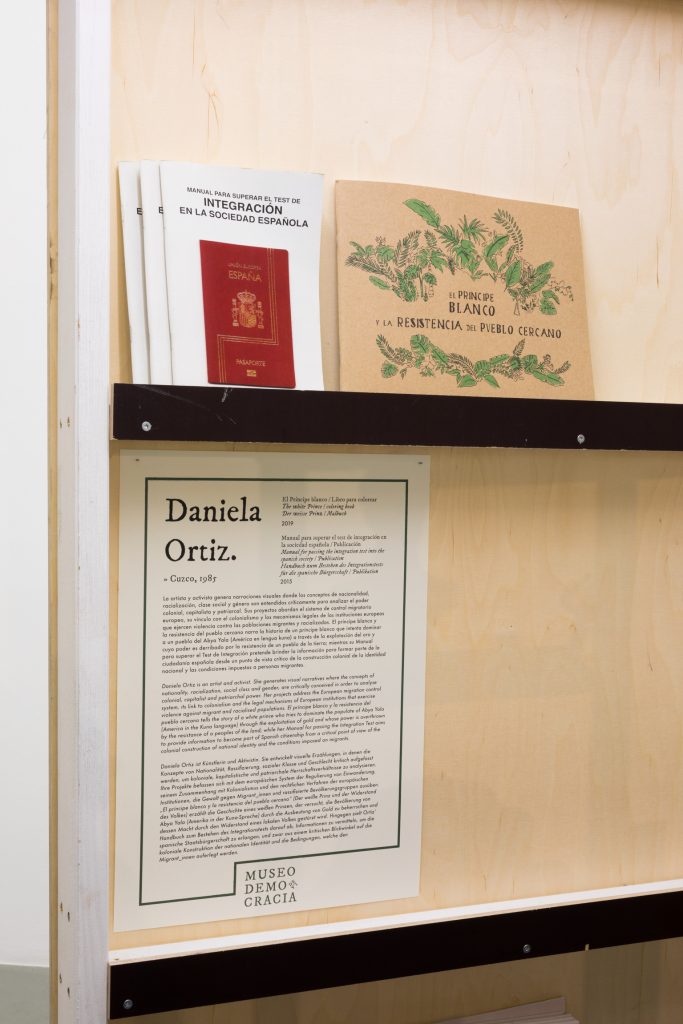
Colouring book
Publication
Daniela Ortiz is an artist and activist. She generates visual narratives where the concepts of nationality, racialization, social class and gender, are critically conceived in order to analyse colonial, capitalist and patriarchal power. Her projects address the European migration control system, its link to colonialism and the legal mechanisms of European institutions that exercise violence against migrant and racialised populations. El príncipe blanco y la resistencia del pueblo cercano tells the story of a white prince who tries to dominate the populate of Abya Yala (America in the Kuna language) through the exploitation of gold and whose power is overthrown by the resistance of a peoples of the land; while her Manual for passing the Integration Test aims to provide information to become part of Spanish citizenship from a critical point of view of the colonial construction of national identity and the conditions imposed on migrants.
Daniela Ortiz / Cuzco, 1985
Daniela Ortiz de Zevallos Pastor is an artist of Peruvian origin, graduated at the Pontificia Universidad Católica del Perú, at the Faculty of Fine Arts of the University of Barcelona and studied painting with Claudia Cuzzi. She has lived in Barcelona since 2007 and returned to Peru in 2020 due to threats and xenophobic attacks received on the internet. She has exhibited her projects in festivals and exhibitions, both solo and group, held in Spain, Peru and Los Angeles. She has participated in seminars, workshops and master classes with Paul Preciado, Rogelio López Cuenca, Santiago Sierra, Rirkrit Tiravanija, Martí Peran, Josep Maria Martí, Raimond Chaves, Alberto López Bargados, Yoshua Okon, Natalia Iguiñiz and Marcelo Expósito. She has also collaborated in projects with other artists, such as Cecilia Podestá or Guillermo Castrillón, both collaborations in 2005.
http://daniela-ortiz.com/
Julia Weist & Nestor Siré
ARCA [extra], 2018
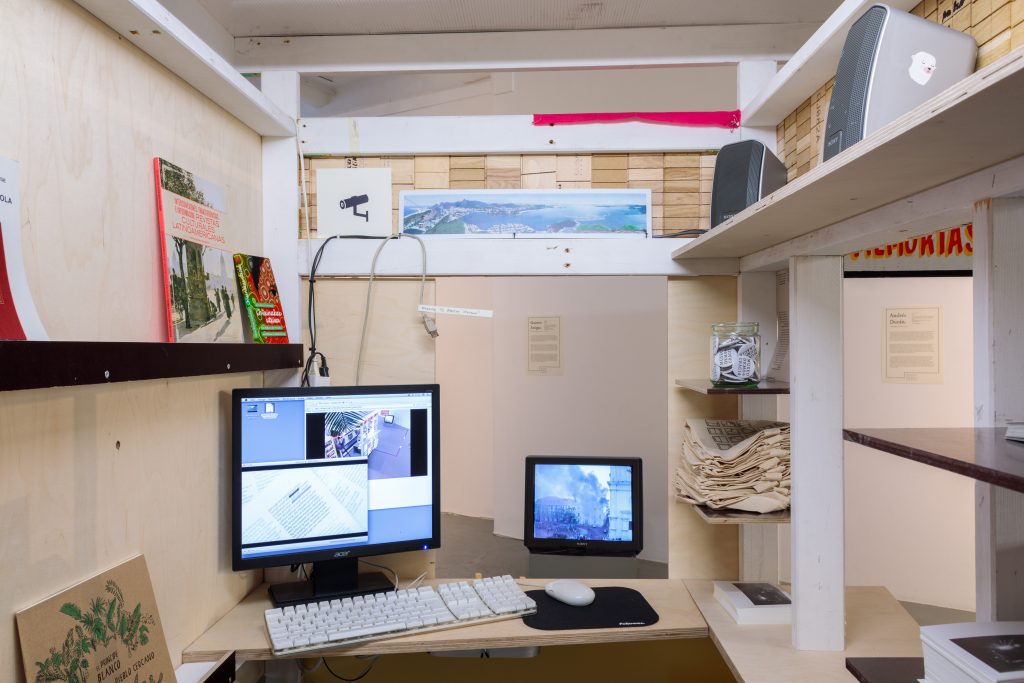
Downloadable digital directory of files
4,99 GB
Digital
ARCA [Extra] is a digital directory of downloadable files created from research into a creative social strategy related to the absence of internet connectivity in Cuba: the Paquete Semanal [Weekly Package], which feeds the country a weekly collection of offline content on 1TB digital media, transported in boxes of hard drives.
This largely entertainment material excludes pornography and politics, and its distribution has roots in Cuba’s clandestine systems of the 1970s. Since the late 2000s, the Paquete Semanal, which costs 2 CUC, has become an industry that reaches almost all Cubans. A full download costs 2 dollars, and is a relative but affordable luxury for most.
The digital copying system is technically illegal, but accepted by the Cuban government, which does not apply the law to it. This “information traffic” is a decentralised phenomenon, without a hierarchical structure, but of the clients. Anyone can re-appropriate the package and readapt it, put a logo on it and resell it, like a creative commons, shaping a user-generated economy with its own content distribution dynamics. This gives rise to the emergence of phenomena such as Packetubers, teenagers who share videos through the packet and use sms and calls to contact their followers, translating the interactivity of the internet into the Cuban offline condition.
Weist and Siré’s work operates as a time capsule; a work-device composed of 6 folders with files to consult and copy from a computer installed in the Kiosco, under the sign that announces “memories are filled”, emulating the interactivity of the distribution points of the weekly packet on the island.
Index of categories in ARCA [extra]
- Original content: a complete collection of original content created in Cuba for the paquete, including digital magazines, advertisements, and shows devoted to entertainment, sports, celebrity gossip, and local culture.
- Matrices: an archive of the promotional logos of Cuban distributors, or matrices, ranging from 1980s VHS rentals to DVD vendors to the el Paquete Semanal studios.
- !!!A R T Section: a complete archive of the artist projects presented in !!!Sección A R T E, a project by Siré to circulate contemporary art in an eponymous folder as part of the paquete
- El Paquete Semanal (national archive): a collection of content and screenshots that documents the architecture of folders of every sub-matriz, or regional distributor, in Cuba.
- Selection of photos: a collection of high-quality images related to the Paquete Semanal, including photos of the PCs used by matrices and of boxes that are built by hand to transport hard drives from one city to another.
- ARCA [Extra] Museo de la Democracia: a folder of content compiled exclusively for this exhibition, including research articles related to the works in the museum’s temporary collection, free of copyright.
Infomercial, 2017
Single-channel video with sound, looped in English and Spanish.
Teaser 3:35 minutes (English) / Full length 16:48 minutes (English), 19:32 minutes (Spanish)
Produced in collaboration with ETRES
ETRES is Cuba’s first ad agency since the Cuban Revolution in 1959, and the platform for their work is El Paquete Semanal. Weist and Siré contracted them to create a motion-graphics “infomercial” illustrating the historical, social, and economic conditions that led to El Paquete. The system’s roots extend to the 1970s, when after more than 10 years of full governmental control of media, an underground novel rental industry was developed, assuming a national exchange network. This network evolved to circulate new media: VHS tapes beginning around the late 1990s, and DVDs toward the mid 2000’s. Finally, El Paquete Semanal took advantage of the increasing presence of satellite TV antennas to access pirated media, the availability of personal electronic devices, and the emergence of a small number of institutional internet connections. While the digital copy-system is technically illegal, it is tacitly permitted through non-enforcement by the government.
A full download of El Paquete Semanal (the Weekly Package) normally costs 2 CUC (approximately 2 dollars), making it a relative luxury, though affordable for most Cubans.
Julia Weist. New York, 1984 & Nestor Siré. Nuevitas, Cuba, 1988
American artist Julia Weist and Cuban artist Nestor Siré have been collaborating since 2016. Their work has been recently exhibited at the Queens Museum (New York), the Gwangju Biennale (Gwangju, South Korea), the Hong-Gah Museum (Taipei), Galería MPA (Madrid) among other institutions. They have written about their collaboration for publications such as Frieze, Rhizome and Triple Canopy and have lectured widely at venues such as The New Museum, Williams College Museum of Art, The MIT Open Documentary Lab and Art Basel Miami. They have been awarded a Jerome Foundation Fellowship, a Camargo Foundation Fellowship and a Media Arts Assistance Fund Grant from New York State.
Web Julia Weist: http://work.deaccession.org/
Web Nestor Siré: http://www.nestorsire.com
Gustavo Artigas
Sin título, 2003

Site-specific intervention
Panama City History Museum
Video, 02‘44‘‘
“Untitled” was carried out by Mexican artist Gustavo Artigas in collaboration with the fire department of the Panamanian capital. The work consisted of filling the Municipal Palace with smoke; the palace houses a little-known Museum of History whose collection includes the country’s Act of Independence. The reactions of passers-by range from total indifference to sobs and screams. In this way, they respond on the basis of their cultural memory to an event that has recurred at multiple times and places in Latin America as well as in the history of Panama City, founded in 1519 and for centuries one of the main ports for Europe and the Americas.
Gustavo Artigas. Ciudad de Mexico, Mexico, 1970
Over the last 25 years, Artigas has experimented with different media and visual art modalities such as Sound Art, Site Specific Installations, Performance Art, Relational works, educational platforms, light pieces and painting. Some of the most recognizable Some of the most recognizable works by Artigas relate ludic structures to disaster situations. His work dialogues with a with a wide variety of issues, from the political to the social identities and became part of the booming group of contemporary Mexican artists that emerged in the 90´s and made an important impact in the international art scene. As part of his practice he conducts specialized creativity workshops in countries like Canada, Argentina, Panama, France, Spain, Finland and Mexico. From 2010 to 2018 he was Professor for Contemporary Art at Escuela Nacional de Pintura Escultura y Grabado La Esmeralda en la Ciudad de México. Since 2018 he co-directs with art mediator and pedagogical curator Muna Cann, the Contemporary Art initiative Art Links Inc. based in Canada. Some collaborations include MOCA Museum of Contemporary Art Toronto, TheSite Magazine and YYZ Artist Outlet.
Ana María Millán
Elevation, 2019
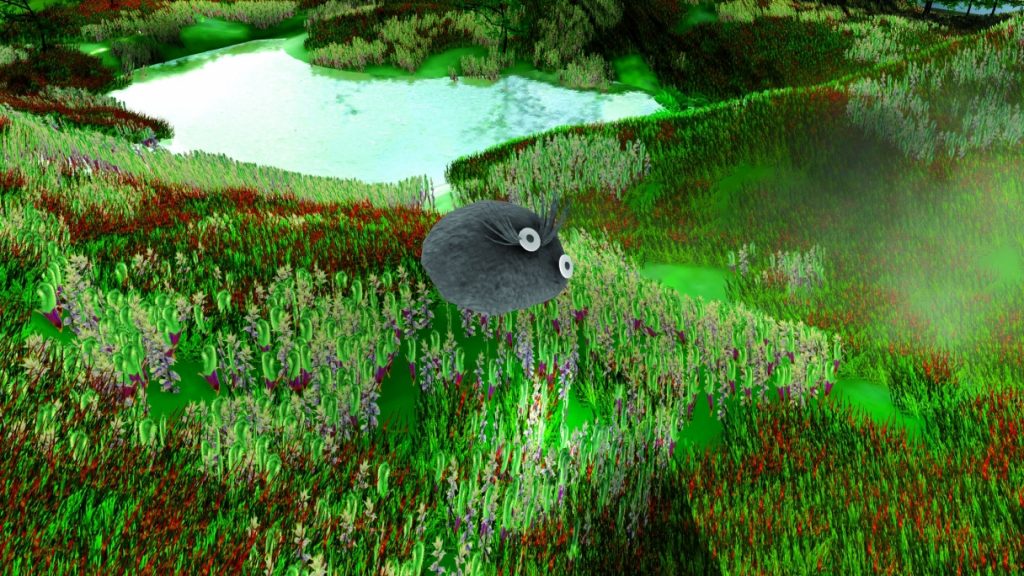
Animation
4 Channel-Color & Sound
00:10’12”
“Elevation” (2019) is a collaborative project with a group of artists at Bogotá’s Museum of Modern Art (MAMBO) to work around the myth of origin of the Revolutionary Armed Forces of Colombia (FARC). The participants in this process are based on the narrative strategies of a comic book of the movement named “Marquetalia, Raíces de la Resistencia” (Marquetalia, Roots of Resistance). The comic book narrates in a simple way and through key characters how a group of militant communists and liberals are expelled from public life during the historical process understood as “The Violence” (1948 – 1958). Their exodus is caused by the homicide of Jorge Eliecer Gaitán, socialist candidate to the presidency, as well as the resulting social uprisings of the “Bogotazo” in 1948. In 1954, during the dictatorship of General Gustavo Rojas Pinilla (1953-1957), the Colombian Constitution prohibited the military or collaboration with international communism. Mobilized communists and liberals went into self-exile in the town of Marquetalia, in the Department of Tolima, a mountainous area of central Colombia. These would be among the first historical antecedents of the movement later known as the Revolutionary Armed Forces of Colombia – People’s Army (FARC-EP), relevant actors in the armed conflict that lasted until 2016. Currently, there is a peace agreement and the once FARC-EP is a legal political party: “COMUNES”.
“Elevation” is a role-playing game and an experience in 3D animation, a contact zone to renegotiate and reformulate the affective, social and cultural memories of a society after the trauma. The artist creates a world of own rules, the participants of the process construct avatars with supernatural powers and re-stage events, formulating outcomes and other possible present and future scenarios. The artwork also promotes exchange between key influencers and subcultures of the Net at a technological, cultural and communicational level to generate an experience of reconciliation and social re-imagination.
Ana Maria Millán. Cali, Colombia, 1975.
Lives and works in Berlin
Complete bio at
http://anamariamillan.info/
Matheus Rocha Pitta
Eye for an Eye, 2020
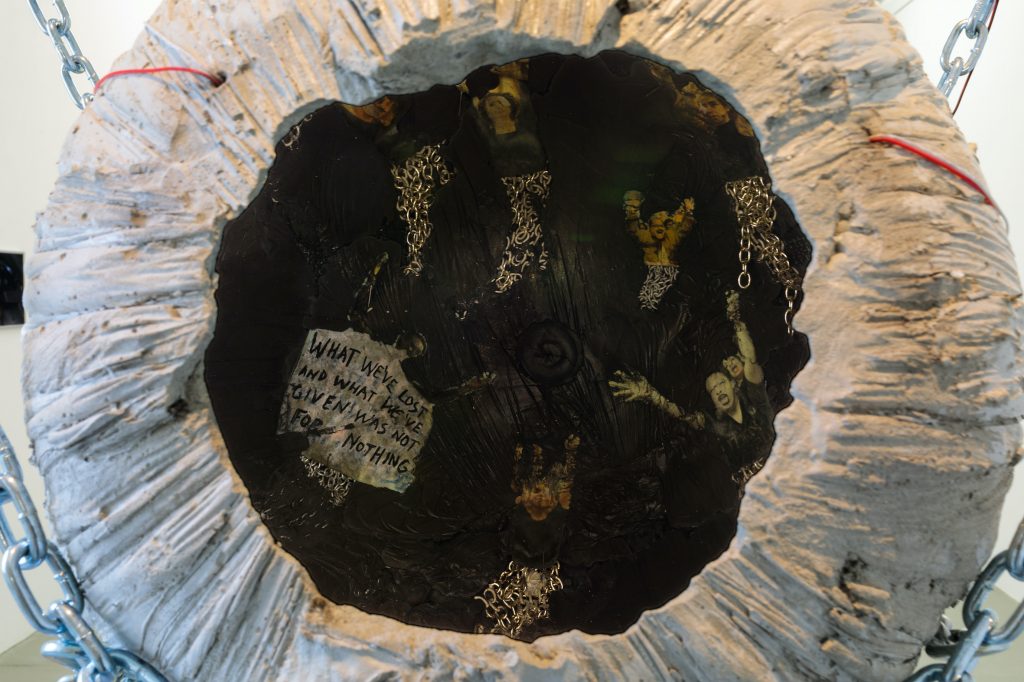
Iron, cement, paper, LED light
Variable Dimensions
This artwork is a meditation on social justice. In the recent wave of protests in Chile, in 2019, more than 400 people lost one or both eyes, which was caused by rubber bullets deliberately shot by the police. One of these blinded protesters said in an interview: “What we’ve lost and what we’ve given wasn’t for nothing.” Rocha Pitta’s sculpture is a gigantic, collective eye that aims to stand in the place of this lost eye. An eye for an eye. To what extent are our notions of justice dependent on visibility? Why should justice be blinded to remain just?
Matheus Rocha Pitta. Tiradentes, Brazil, 1980
Lives and works in Berlin and Rio de Janeiro. Studied history and philosophy at the Universidade Federal Fluminense, Niterói, and the University of the State of Rio de Janeiro in Rio de Janeiro. His work has been presented internationally in solo and group exhibitions, including at Kunstverein Hamburg, Germany, 2020; Museu de Arte Moderna in Rio de Janeiro, 2018, Triennial Frestas, São Paulo, Brasil, 2017; El Ranchito, Matadero Madrid, España 2014; The Great Acceleration, 9 Bienal de Taipei, Taipei, Taiwan 2014; Artesur, Collective Fictions, Nouvelles Vagues, Palais de Tokyo, París, Francia, 2013 y Kunst Im Tunnel, Düsseldorf, Alemania, 2013. He was grantee at Künstlerhaus Bethanien, Berlin (2016-17). He is represented in the collections of the Castelo de Rivoli, Turin, and the Museu de Arte Moderna in Bahia, Rio de Janeiro and São Paulo, among others.
Andressa Cantergiani
Combat, 2018
Performance documentation
6 Photographs
30 cm × 40 cm
Wearing a white jumpsuit, the artist spent eight days at the Southern Command Military Museum (MCCC), Porto Alegre, Brazil, using her body to confront tanks, combat cars and cannons from the collection of the armed forces, establishing disruptive connections to these symbols of masculinity. Inspired by the intersectional feminist concept of sorority, a counterpoint experiment was proposed with the collaboration of eight women who brought daily survival kits for the artist. Each day a poetical-political collection was formed, with basic provisions such as warm clothing and food. The number eight is related to global feminist movements such as 8M, Women’s March, me too, Niunamenos, 8A, #ELENÃO [BUT NOT HIM], among other movements of political struggle for socially subalternised minorities.
Andressa Cantergiani. Caxias do Sul, Brazil, 1980
Visual artist and performer, mother and activist. Lives between Berlin, DE and Porto Alegre, BR. PhD student in Visual Arts at PPGAV-UFRGS and research fellowship at University of Applied Sciences and Arts – Hoschulle Hannover – Germany. MA in Communication and Semiotics at PUC/SP. Graduate in Performing Arts at DAD/UFRGS. Artist represented by Mamute Gallery, Porto Alegre-Brazil. Director of the BRONZE Residence and the Peninsula Gallery in Porto Alegre. She has carried out residencies, projects and exhibitions in various spaces around the world such as Fundação Iberê Camargo, Brazil, Museum of Contemporary Art, MAC, Porto Alegre; Museum of Contemporary Art Bispo do Rosário, Rio de Janeiro, BR; Terra Una Residency, Minas Gerais, BR; Insurgencias, Berlin/DE, Despina/RJ. Her works are in private and public collections such as the Museum of Art of Rio Grande do Sul, Porto Alegre.
Cheril Linett
Yeguada Latinoamericana, 2020
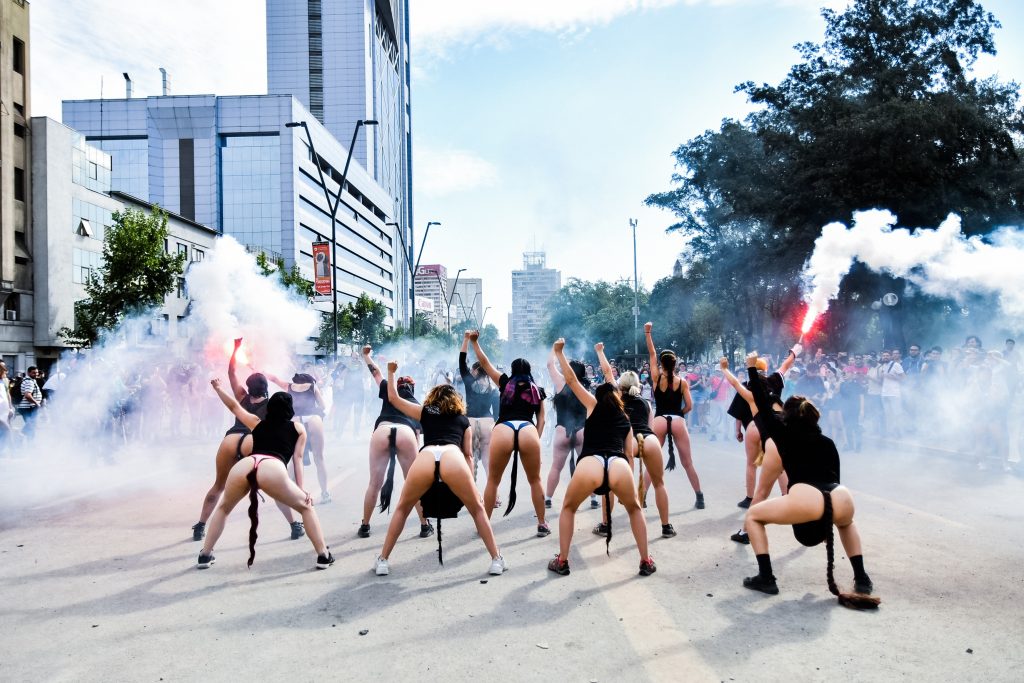
Impresión digital en PVC / Digital Print on PVC / Digitaldruck auf PVC
200 cm × 300 cm
YEGUADA LATINOAMERICANA is a performance project created and directed by artist Cheril Linett, who invites women and sexual dissidents to take action. They arrange their bodies in streets, institutional locations and national holidays to ironize and challenge classist, patriarchal, colonial and speciesist regimes. Developed by a stable performance and direct action group, the project exploits two aesthetic strands: trans-species and funereal. Both take place in the public space and exploit the procedures of the forces of law and order in order to compose in present time images and situations activated by the Yeguada (the Cavalry).
Cheril Linett. Santiago de Chile, 1988
Performance artist and theatre scholar. Author of the performance project Yeguada Latinoamericana. She has a degree in theatre and the specialisation in performance art from the Universidad Academia de Humanismo Cristiano in Santiago de Chile. She began her artistic career in 2015 by participating in meetings, festivals and, above all, independent performances in public spaces. To date, she has realised and staged numerous works, which are grouped in performance series such as Coreografía de succión, Poética de las Aguas, Vertiente Fúnebre and Casa. She is currently a scholarship holder of the stage direction programme FITAM – Goethe-Institut Chile in Santiago de Chile.
